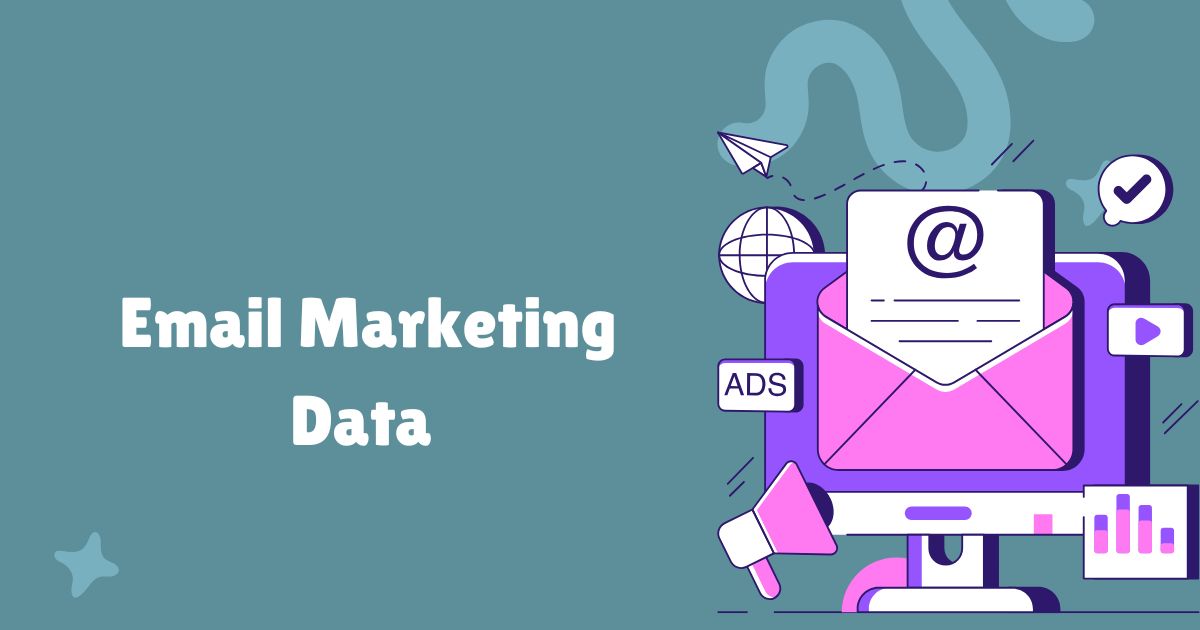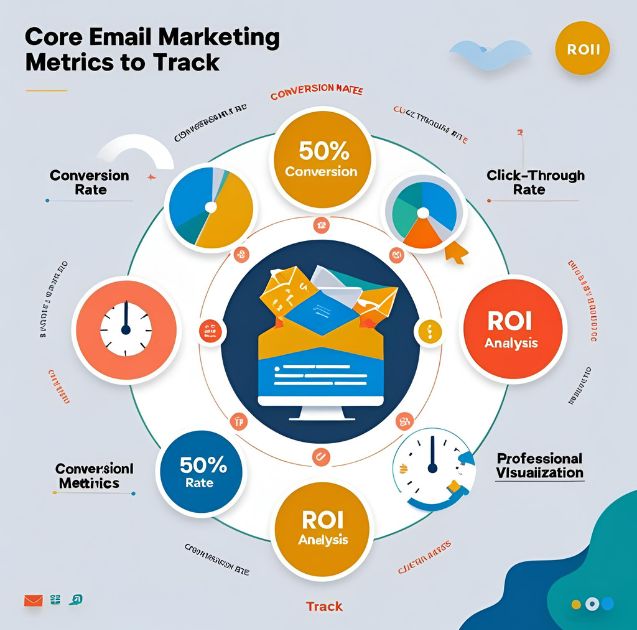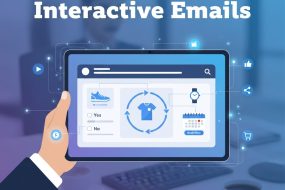
Email marketing remains one of the highest-performing digital channels, delivering an average return of $42 for every dollar spent. Yet many businesses struggle to unlock their campaign’s full potential because they don’t know how to properly analyze their data.
Understanding your email marketing metrics goes beyond simply checking open rates. Proper data analysis reveals which campaigns drive revenue, what content resonates with subscribers, and where opportunities for improvement exist. When you master these insights, you can optimize your strategy to boost engagement, reduce churn, and increase conversions.
This guide will walk you through the essential metrics to track, tools to use, and actionable steps to transform raw data into strategic decisions that grow your business.
Core Email Marketing Metrics to Track

Open Rate and Its Limitations
Open rate measures the percentage of recipients who opened your email. While it’s often the first metric marketers check, it has significant limitations in the modern email landscape.
Apple’s Mail Privacy Protection and other privacy updates have made open tracking less reliable. These features automatically load images and pre-fetch content, inflating open rates without genuine user engagement. Focus on open rate trends rather than absolute numbers, and always pair this metric with others for a complete picture.
Click-Through Rate: The Engagement Indicator
Click-through rate (CTR) shows the percentage of recipients who clicked on links within your email. This metric provides clearer insight into genuine engagement since it requires deliberate action from subscribers.
Calculate CTR by dividing total clicks by delivered emails, then multiplying by 100. A higher CTR typically indicates compelling content and effective calls-to-action. Industry benchmarks vary, but most sectors see CTRs between 2-5%.
Conversion Rate: Measuring Business Impact
Conversion rate tracks the percentage of email recipients who completed your desired action, whether that’s making a purchase, signing up for a webinar, or downloading content. This metric directly ties your email marketing efforts to business outcomes.
To calculate the conversion rate, divide the number of conversions by the number of delivered emails. Track both overall conversion rates and conversion rates by traffic source to understand how email performs compared to other channels.
Bounce Rate and List Health
Bounce rate indicates the percentage of emails that couldn’t be delivered. Hard bounces occur when emails are sent to invalid addresses, while soft bounces happen due to temporary issues like full inboxes.
Monitor bounce rates closely, as high rates can damage your sender reputation. Remove hard bounces immediately and consider removing addresses that consistently soft bounce. A healthy bounce rate typically stays below 2%.
Advanced Metrics for Deeper Insights
Revenue Per Email and Customer Lifetime Value
Revenue per email divides total revenue generated from an email campaign by the number of emails delivered. This metric helps you understand the direct financial impact of your campaigns and compare performance across different message types.
Track customer lifetime value (CLV) for subscribers acquired through email marketing. This long-term metric reveals the true value of your email acquisition efforts and helps justify marketing spend.
List Growth Rate and Churn
Calculate list growth rate by subtracting unsubscribes and bounces from new subscribers, then dividing by your total list size. A positive growth rate indicates healthy list expansion, while a negative growth rate signals problems with content relevance or sending frequency.
Monitor churn patterns to identify when subscribers are most likely to leave. Look for correlations between unsubscribe spikes and specific campaigns, sending times, or content types.
Engagement Over Time
Analyze how subscriber engagement changes over time. Track metrics like days since last open, average time between opens, and engagement by subscriber tenure. This analysis helps you identify at-risk subscribers and create re-engagement campaigns.
Segment your list based on engagement patterns. Highly engaged subscribers might appreciate more frequent communications, while less active segments may need different content or reduced frequency.
Tools for Email Marketing Analysis

Native Platform Analytics
Most email service providers offer built-in analytics dashboards. Platforms like Mailchimp, Constant Contact, and HubSpot provide standard metrics plus some advanced features like A/B testing results and automation performance.
While convenient, native analytics often lack deep customization and cross-channel integration. Use them for quick checks and basic analysis, but consider additional tools for comprehensive insights.
Google Analytics Integration
Connect your email marketing platform with Google Analytics to track subscriber behavior beyond the initial click. Set up UTM parameters for all email links to see how email traffic converts compared to other sources.
Google Analytics can reveal which email campaigns drive the most valuable traffic, how long email subscribers spend on your site, and what actions they take after clicking through.
Advanced Analytics Platforms
Tools like Klaviyo, Omnisend, and Sendinblue offer sophisticated segmentation and predictive analytics. These platforms can identify trends like optimal send times, predict customer lifetime value, and automatically segment subscribers based on behavior.
Consider investing in advanced tools if you send high volumes of email or rely heavily on email marketing for revenue generation.
Setting Up Effective Data Tracking
UTM Parameter Strategy
Create a consistent UTM parameter naming convention for all email links. Include campaign source (email), medium (newsletter, promotional, etc.), and campaign name. This consistency makes data analysis much easier and more reliable.
Document your UTM strategy so team members use consistent naming. Even small variations can fragment your data and make analysis difficult.
Goal Configuration
Set up conversion goals in your analytics platform that align with business objectives. Beyond purchases, track email signup confirmations, content downloads, and other micro-conversions that indicate engagement.
Configure goal values when possible. Assigning monetary values to actions like newsletter signups or content downloads helps you calculate the true ROI of your email marketing efforts.
Data Integration
Connect your email marketing data with customer relationship management (CRM) systems and other marketing tools. This integration provides a complete view of the customer journey and helps attribute revenue accurately across touchpoints.
Regular data syncing ensures your analysis reflects the most current subscriber behavior and campaign performance.
Actionable Analysis Techniques
Cohort Analysis
Group subscribers by signup date, campaign source, or other shared characteristics, then track their engagement over time. Cohort analysis reveals patterns like seasonal engagement changes or the long-term value of different acquisition channels.
This analysis helps you understand subscriber lifecycle patterns and optimize your nurture sequences accordingly.
A/B Testing Analysis
Run systematic tests on subject lines, send times, content formats, and call-to-action buttons. Analyze results not just for statistical significance, but for practical business impact.
Document your testing results to build a knowledge base of what works for your audience. Look for patterns across multiple tests rather than making decisions based on single experiments.
Segmentation Performance
Compare metrics across different subscriber segments to identify your most valuable audiences. Analyze performance by demographics, behavior, purchase history, and engagement level.
Use segment insights to create more targeted campaigns and personalized content. High-performing segments might justify increased sending frequency or premium content.
Transforming Data into Strategy
Regular data analysis should directly inform your email marketing strategy. Schedule weekly or monthly reviews to identify trends, opportunities, and areas for improvement.
Create standardized reports that stakeholders can easily understand. Focus on metrics that tie directly to business outcomes rather than vanity metrics that don’t drive decisions.
Test new strategies based on your analysis insights. If data shows higher engagement on certain days, adjust your sending schedule. If specific content types drive more conversions, create more similar content.
Remember that email marketing data tells a story about your subscribers’ preferences and behaviors. The businesses that succeed are those that listen to this story and adapt their approach accordingly.


















No Comments